Success and creativity feed off of our environment: the things we see, hear, and feel around us while we work are incredibly impactful as they influence our mood, creativity, and focus. For many, workspaces directly affect one’s ability to create and inevitably, those special spaces begin to reflect the people that work in them, too. It might be a cubicle, an art studio, a home office, a co-working space—or even something we haven’t thought of, but it got us wondering, what does the relationship between our workspace and success look like? For us, the answer lies with modern disruptors. Stepping inside their spaces is like peering into their mind. It might be clean or messy, colorful or plain but above all, it's personal and tells their unique story. That’s why we launched the How I Work series. Follow us as we highlight the creative people we admire, the spaces they work in, and how they monetize their passion.
Photo: @geoffguich
"Find what you love to do and make a living doing it."
We've heard the phrase over and over but is it really achievable? Sometimes it can feel like a pipe dream but we found proof in Miami-based artist, Nicole Salgar. She turned her creativity into a business and is now a highly sought after muralist who's worked with some of the world's biggest brands including Starbucks, Absolut, Tanqueray, and Create & Cultivate—she painted and installed the stunning murals for Steve Madden and BoxyCharm at our 2019 Vision Summit.
So how did she do it? How did Salgar create a demand for her artwork and secure valuable contracts with major brands? If you want to know how to be an artist and make money too, then keep reading because we sat down with Salgar to find out more about her creative path, how she hustled and cold-emailed brands to build her business, her advice for artists who want to do the same, and so much more.
Can you begin by telling me a little bit about yourself, your style of artwork, and the space you work out of?
“I began drawing and painting at a very young age, which led my parents to encourage me to attend art magnet schools in Miami for my entire education. Initially, my focus and passion were targeted at fashion design, which carried me to NYC as soon as I was 18 years old to enroll in and eventually graduate from FIT—Fashion Institute of Technology—with a bachelor’s degree.
“My ‘style of artwork’ is something that I can’t entirely describe. Having experimented with so many mediums, subjects, and intentions with visual art; I can’t say that I have a specific style. I have aesthetics that I’m naturally attracted to, as well as themes and color stories, but my style is a continually evolving and changing thing. Currently, I have a studio in my home with my partner which we both work out of."
To be our most inspired and successful selves, it takes being in a certain headspace and workspace—and your space is wonderful. That being said, your studio is crucial to your artwork. Why do you think that is? Can you walk me through its nooks and crannies and why is it the optimal place for you to create new pieces?
“The studio I work out of needs to be a perfect balance of organization and chaos. While I prefer to have materials and tools in places where I can always find them, there is an inevitable amount of clutter that makes a workspace ‘yours.’ When I am in the studio working I have a bit of a ritual before I begin where I light a scented candle and listen to a podcast. It helps get me in the zone.
“I keep quite a few plants in our space, and we are fortunate to have a great deal of natural light from two large windows. Our studio also has stacks of older paintings, as well as those which cover the majority of the walls. Eventually, we will move our studio out of our home and into a larger space, where we can make larger work and bigger messes.”
Nicole Salgar hand-painted this mural for Boxy Charm at the Create & Cultivate Vision Summit in Miami.
Photo: Jessica Bordner Photography
Art is a wonderful outlet and vehicle for self-expression. How have you managed to monetize your passion and creativity in a noteworthy way? Can you run through your most pride and joy projects with clients that you were excited to work with?
“The monetization of any artistic or creative endeavor is a tricky thing. When working with corporate or commercial clients, I try to put as much of my own creativity into it as possible, but the very idea of ‘commercial art’ usually comes with very specific colors, themes, and branding. Potential clients will say things like, ‘we want _____, but in your style’. However, that is almost entirely impossible.
“In my personal work, I don’t incorporate branding or merchandise, nor do I use any text so, while I appreciate the interest in my ‘style’ I don’t think it’s a realistic request 99% of the time. So, when the design parameters get really narrow, there is often very little room for my own creativity to be allowed into the work. When I am approached for a commission, the commissioning company or marketing group usually has a very clear vision of what they want.
“So, in terms of monetizing my work, I have learned to primarily focus on my skill level. Even if my own ‘creative vision’ doesn’t find its way into the commercial work, I feel confident that I can execute any project, in any style, because I am constantly trying to expand, explore and perfect my skill level. I think there is value in having the physical ability to paint anything, no matter how far outside of your own vision it may be. A job I had this year that I was really excited about was working with Hope murals which is a nonprofit organization that brings art to young kids at detention centers. That for me was a really incredible project, although I did not get compensation for it, it is doing something that is bigger than myself and meaningful to the kids.
“Another client I worked with this year was Starbucks where we painted a siren inside a new store they opened here in Miami, Florida. We work with them a lot and they are one of my favorite clients. I love my clients and I always find a way to collaborate with them.”
What was the vision/direction for the studio space? What did you think about when decorating?
“When decorating our workspace, my greatest intention was efficiency. I work out of a small space, which is nice because it feels more like home, but obviously comes with its own limitations. Ideally, I feel it’s best to have a workspace away from home. It’s a similar concept to studying in a library as opposed to your bedroom. Being away from home in a workspace can put you in much more of a working mindset. Your home is a place of comfort, which can often be distracting and too relaxed to get into a serious work mode. With that being said, I think being surrounded by your own work can be a great motivator to learn from past mistakes and to see your own evolution and progress on a daily basis.”
How important is the design of your studio for conjuring the creativity and inspiration for your work?
“I don’t think the design of my studio determines much of my creative process. Having done so much public work, I’ve learned to get into a productive headspace wherever I am at the moment. There are times (particularly painting murals) where the weather, equipment, or other work conditions are far from optimal, but you have to learn to work around it. I feel it’s important to avoid specific conditions or rituals in order to do your best work, that should be something you can channel and execute at any time, from any place.”
"It’s important to avoid the idea of branding yourself. You can’t bank on one style, one image, one thing—diversity is key."
—Nicole Salgar, Muralist and Founder, NS/CB Studio
What is your biggest inspiration? And how does the factor into your work?
“Oddly enough, I think my biggest inspiration is cinema. Although it’s an art form that I have no experience with, it is definitely the thing that motivates me the most to create paintings. In cinema, life is captured through very specific compositions and color schemes for maximum effect. In recent years I have been very influenced by the films of Panos Cosmatos, Peter Strickland and Nicolas Winding Refn as well as classics such as Almodovar, Hitchcock, and Argento.”
What is your favorite piece/place in your studio and why?
“It’s very difficult to say which my favorite piece is. I must admit, my favorite work of my own will almost always be my most recent. I have been working on a series of portraits that play with the idea of inter-dimensional existence, or multiple realities. Those would be my favorite currently, but I’m sure that will change soon.”
How did you decide on the color scheme?
“Color is an obsession of mine. I most often lean toward vivid colors with abrupt contrast accents. Lately, I have been using a cooler color palette as the majority of the pieces, while filtering in an accent of an extreme red or hot pink to offset the composition and draw the eye to where I want it to focus.”
Do you have any tips on how somebody might be able to accomplish what you’ve accomplished... in regards to working with a client that they’re striving to work with and finding someone that aligns with their vision?
“People ask me this question a lot. The way I’ve gone about making a career out of art was entirely through my own diligence. Every opportunity I’ve been given, came because I was consistently emailing companies, interior decorators, property owners etc. At times, it is tedious and exhausting, but I will spend entire days/weeks/months contacting companies I would like to work with. Now, I may only hear back from 5% of these potential clients, but that 5% may lead to a job, which makes it possible for me to continue living and working as I do. This is the only path I know toward monetizing my work. I have no experience with agents, managers or galleries. I have single-handedly managed the business and creative side of my career."
“So my advice would be to identify your intention first. If your primary motive is to make money, then you need to do extensive market research in order to price properly and to identify the clientele who are going to generate that revenue. If your intention is more for yourself and your own creativity, I think it’s important to try everything, and over-think nothing. Of course, we would all love to make money while doing work that comes from the heart, but business and creativity are often polar opposites from one another. So, it’s important to work in both realms equally in order to keep the lights on, while still developing your own work and voice.
“I also think it’s important to avoid the idea of branding yourself. If you provide yourself with specific parameters because you’re trying to brand yourself, you automatically limit your own work, and you give your work a shorter shelf-life. Branding is often based on trends, and trends are always shifting. You can’t bank on one style, one image, one thing—diversity is key.”
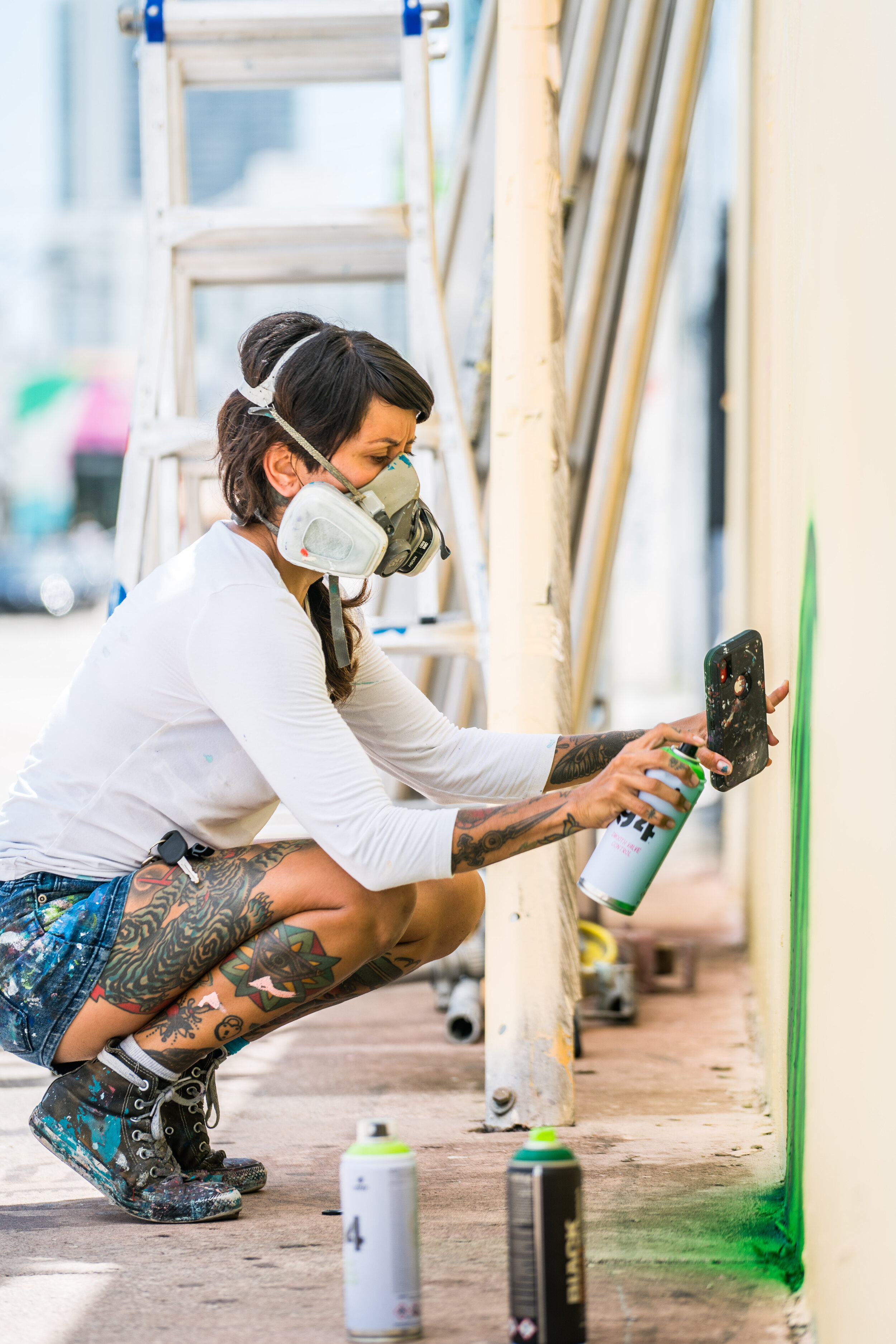
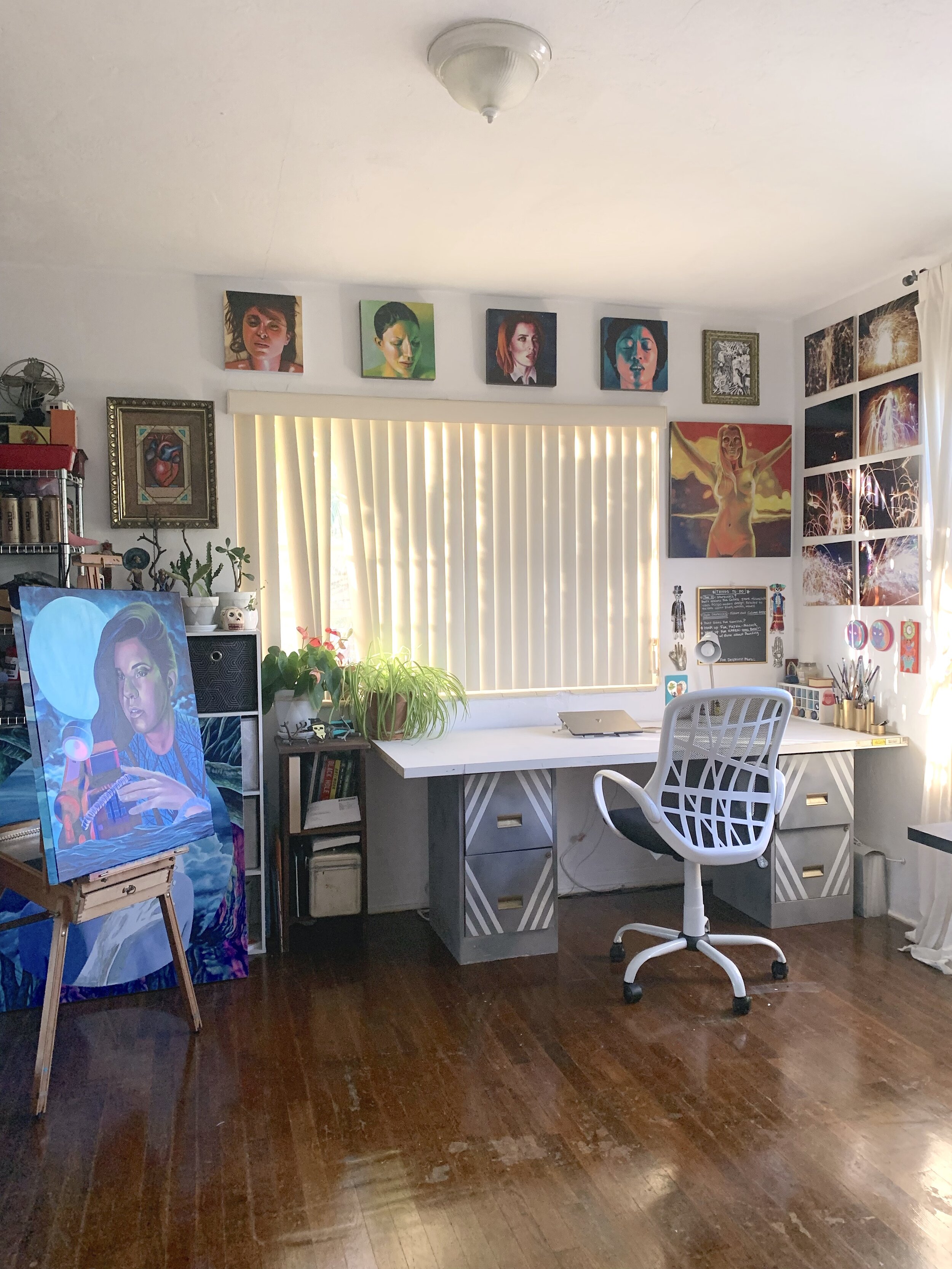
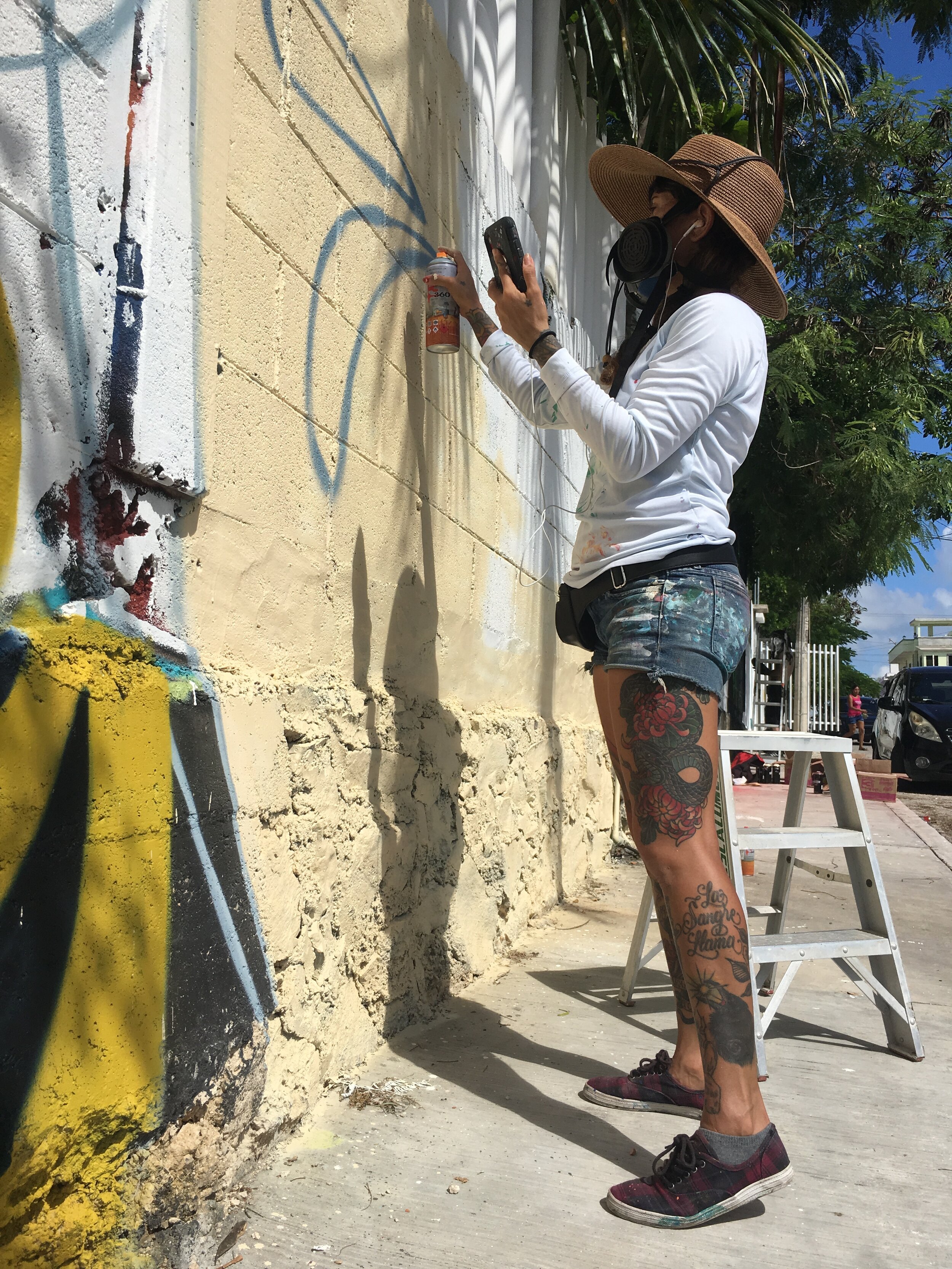

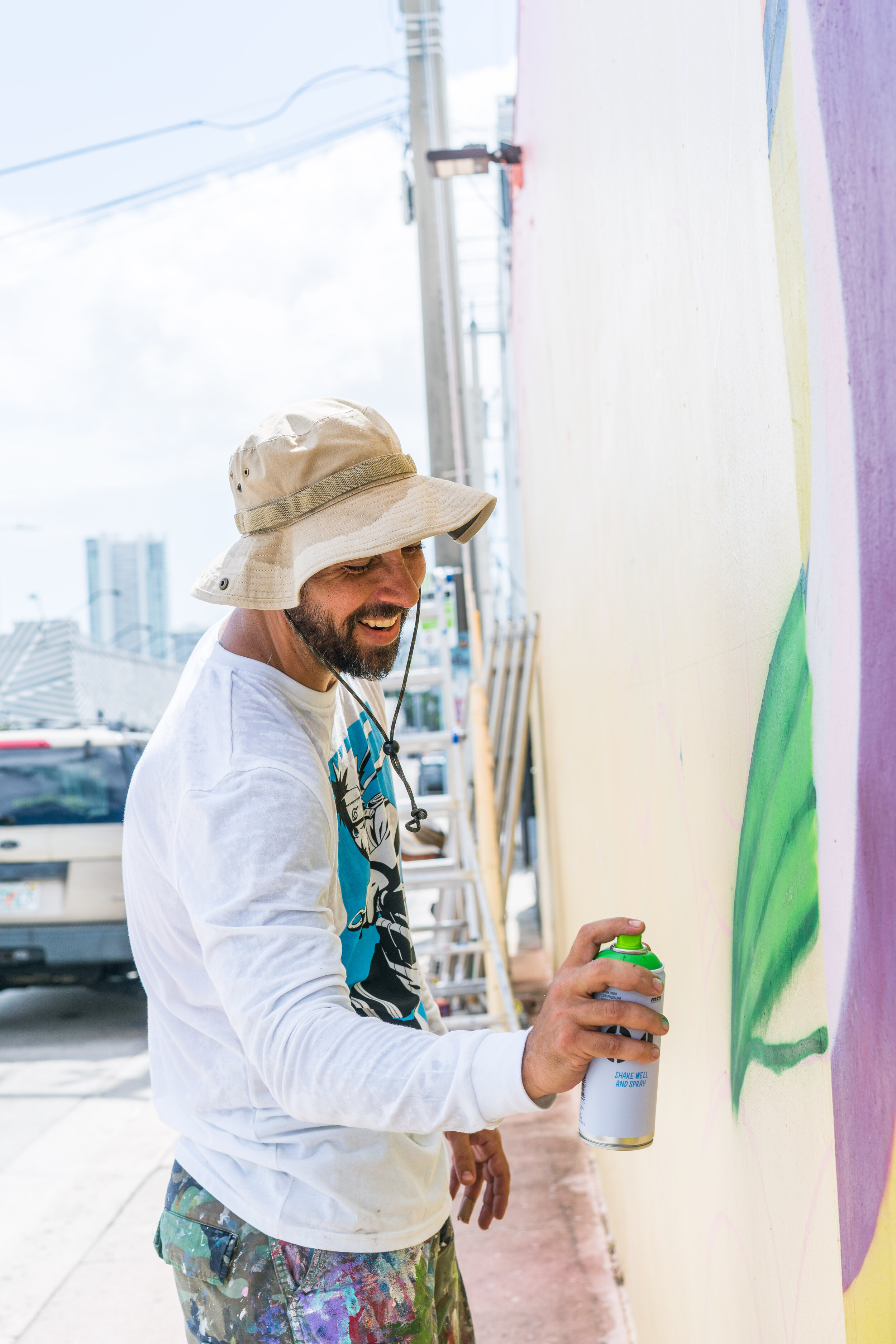
Photo: @vacostudio
Your art is a full-fledged business and being an artist is your full-time job. Can you highlight some obstacles that you’ve faced on your way to where you are now? And how did you surpass them?
“When discussing art as a career, there are several obstacles that will affect you, as well as the greater creative community. One of my largest issues is pricing within the art community. Outside of the gallery system, the art business is basically the Wild West. For example: If a property owner in Miami wants to commission a mural, they might get 15 different submissions or proposals. Of those 15 proposals, there will be a wide variety of prices, ranging from tens of thousands of dollars to nearly nothing. The price someone else quotes, doesn’t always reflect the quality of their work or their skill level, but for the clients, it can turn into a bidding war where the lowest bidder gets the job. That lowest bidder might do an amazing job on the mural, but they are now known as the ‘cheap muralist’, and when they do decide to start pricing appropriately a new ‘cheap muralist’ will underbid them and so on.
“It’s extremely important to know the value of your work, to price it appropriately (professional industry standards), and to stick to that price. We are not used car salespeople, we are creatives and our creativity needs to be used in our work, not our negotiating skills. It is a constant struggle to surpass this issue but I stick to my prices and I still get clients so I am grateful that the clients I work with now value me and my work.”
Who is your favorite artist right now?
“Currently, I’ve been really inspired by a painter by the name of Mr. Aryz. His recent work is absolutely beautiful in composition, color, and execution.”
Where can someone buy and support your art?
“I have several avenues which potential clients contact me through, but our website nscbstudio.com is the most efficient way. I can also be easily contacted through Instagram @nmsalgar or @nscbstudios.
MORE FROM THE BLOG












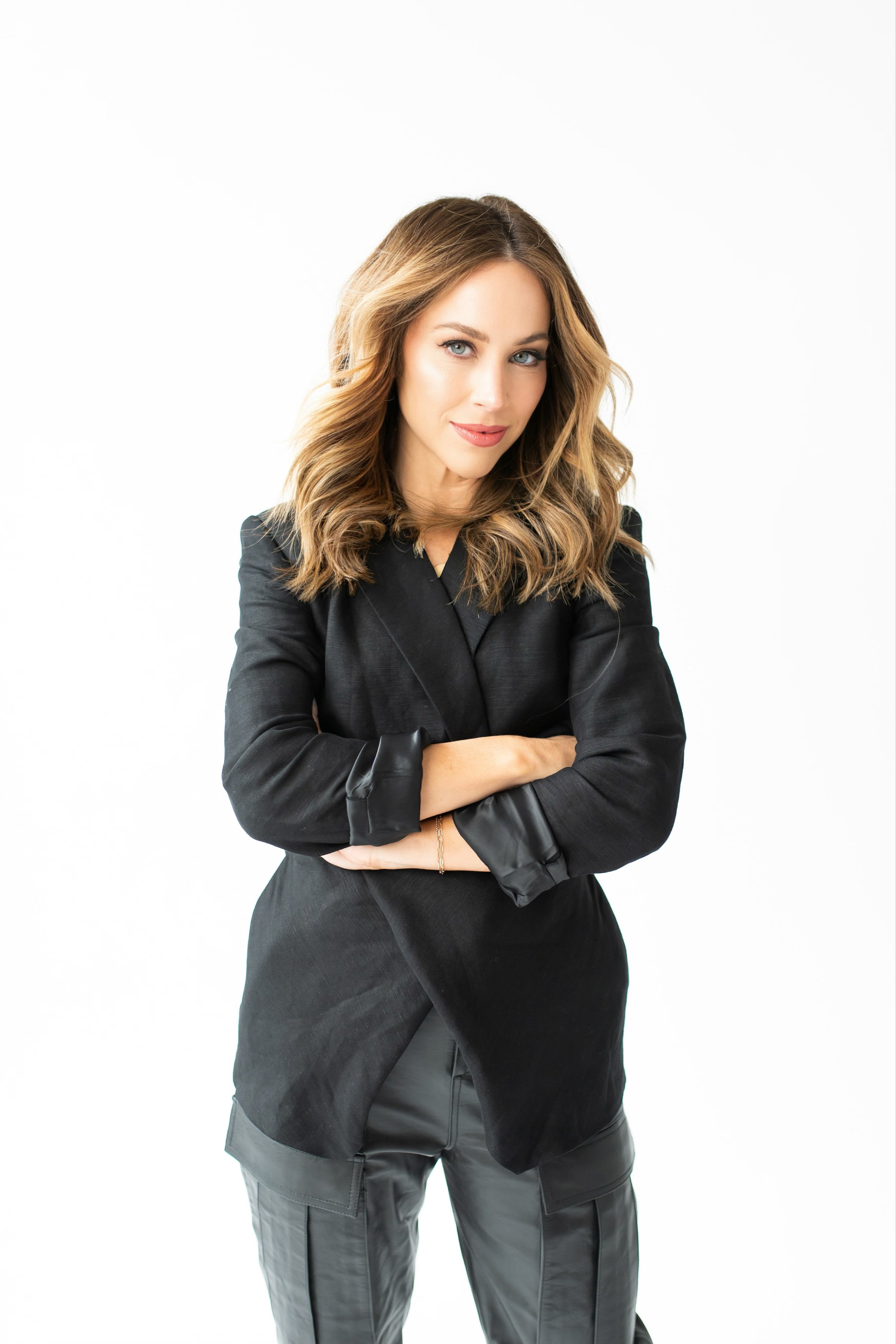
Missed out on Gina Bianchini’s incredible session from our Offsite? No worries! We’re sharing her insights on building a thriving community that feels like a real network, not just an audience.